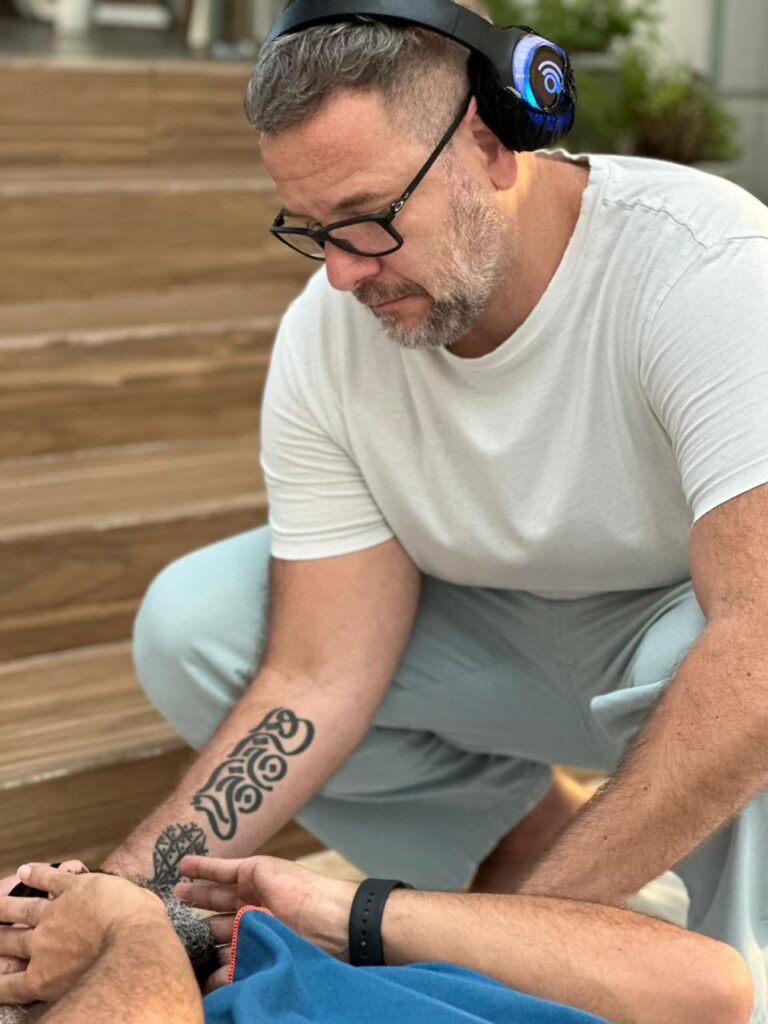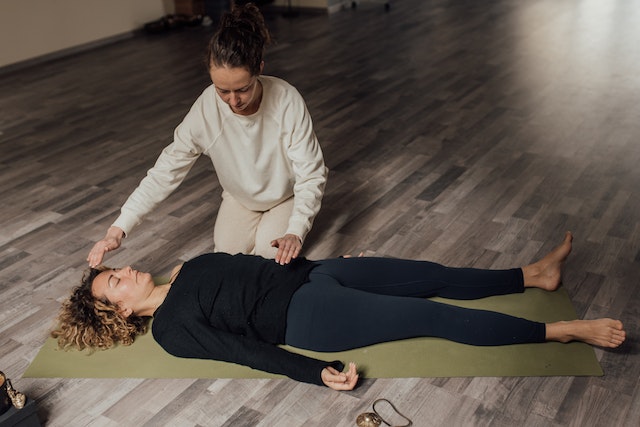In our fast-paced modern world, anxiety has become a pervasive challenge, affecting millions worldwide. As the demands of daily life intensify, finding effective and holistic approaches to manage anxiety becomes paramount. This blog aims to delve into the transformative realm of breathwork, offering techniques designed to bring calm amidst the chaos. Transformational breathwork, rooted in ancient practices and adapted for contemporary living, emerges as a powerful tool for navigating the intricate landscape of anxiety.
Amidst the hustle and bustle, this guide invites you to explore a journey of self-discovery and relief. By understanding the profound impact of intentional breathwork on mental well-being, we embark on a quest to unveil techniques that can be woven into the fabric of daily life.
Understanding Anxiety and Its Impact:
In the modern era, anxiety has become a prevalent aspect of daily life, affecting individuals across diverse demographics. Characterized by persistent worry, fear, and heightened stress levels, anxiety can have a profound impact on both mental and physical well-being. According to recent statistics, the prevalence of anxiety disorders continues to rise, underscoring the urgent need for effective coping mechanisms.
Chronic anxiety can manifest in various ways, from sleep disturbances and fatigue to muscle tension and difficulty concentrating. It not only compromises emotional health but can also contribute to the development of other health issues.
The Basics of Transformational Breathwork:
Transformational breathwork stands as a holistic and therapeutic approach to managing anxiety, centering its principles on the fundamental connection between breath and mental well-being. At its core, this practice emphasizes conscious and intentional breathing to induce a state of relaxation, foster emotional release, and promote overall mental clarity.
Originating from ancient wisdom and adapted for contemporary use, transformational breathwork guides individuals in exploring the full capacity of their breath, acknowledging it as a powerful tool for emotional and physical transformation. By consciously engaging with the breath, practitioners tap into its potential to influence the autonomic nervous system, promoting a shift from the stress response to the relaxation response.
Breath Awareness Exercise:
To embark on the transformative journey of breathwork for anxiety, begin with a foundational practice: breath awareness. This simple yet powerful technique serves as a gateway to mindfulness, fostering an immediate connection between breath and inner calm.
Start by finding a quiet space to sit or lie comfortably. Close your eyes, bringing attention to your natural breath. Observe the inhalers and exhale without attempting to control them. Notice the sensation of the breath entering and leaving your body.
As thoughts arise, gently guide your focus back to the breath. Engage in this practice for a few minutes initially, gradually extending the duration as you become more comfortable. The breath awareness exercise serves as a grounding technique, anchoring you in the present moment and creating a foundation for more advanced breathwork practices.
Deep Diaphragmatic Breathing:
To practice deep diaphragmatic breathing, find a comfortable seated or lying position. Place one hand on your chest and the other on your abdomen. Inhale slowly through your nose, allowing your diaphragm to expand and your abdomen to rise. Exhale gently through pursed lips, feeling your abdomen fall.
This intentional breathwork engages the diaphragm, signaling the body’s relaxation response and countering the shallow breathing associated with anxiety. Regular practice of deep diaphragmatic breathing not only increases oxygen flow but also helps regulate the nervous system, contributing to a calmer and more centered state of being.

Box Breathing Technique:
A structured and rhythmic practice, the Box Breathing Technique, also known as square breathing, presents an effective tool for anxiety management. This method involves inhaling, holding the breath, exhaling, and pausing in equal intervals, creating a metaphorical “box” in the breathing pattern.
Commence by finding a comfortable posture. Inhale deeply through the nose for a count of four, allowing the breath to fill your lungs. Hold the breath for another count of four, then exhale slowly for the same duration. Finally, maintain a pause for four counts before beginning the cycle anew.
Circular Breathing for Emotional Release:
Circular breathing, rooted in ancient traditions, offers a unique pathway to emotional release and inner healing. This technique involves maintaining a continuous, cyclical pattern of inhalation and exhalation, creating a seamless flow of breath. Circular breathing is renowned for its ability to unlock stored emotions and promote a deep sense of release.
To practice circular breathing, start with a relaxed posture. Inhale steadily through your nose, allowing the breath to flow seamlessly into the exhale without pauses. Visualize a continuous circle of breath, fostering a rhythmic and fluid pattern. As you engage in circular breathing, be open to experiencing any emotions that may surface, allowing them to dissipate with each breath cycle.
Seeking Professional Guidance:
While breathwork proves to be a powerful self-help tool, it’s crucial to acknowledge the importance of seeking professional guidance, especially for individuals dealing with severe or persistent anxiety. Certified breathwork instructors, therapists, or mental health professionals can offer tailored support and ensure safe and effective breathwork practice.
1) Certified Instructors:
Explore certified breathwork instructors who can provide personalized guidance, ensuring you practice breathwork techniques correctly and safely.
2) Therapeutic Support:
For those with underlying mental health concerns, including anxiety disorders, integrating breathwork into a broader therapeutic approach may be beneficial. Mental health professionals can offer a comprehensive strategy for managing anxiety.
3) Workshops and Classes:
Attending workshops or classes led by qualified instructors to deepen your understanding of breathwork techniques and receive real-time feedback.
3) Individualized Plans:
Professionals can create individualized breathwork plans tailored to your specific needs, addressing the nuances of your anxiety and emotional well-being.

Conclusion:
In the tapestry of breathwork for anxiety, we’ve explored the transformative potential of intentional breathing— a journey of self-discovery, resilience, and profound relief. From foundational practices like breath awareness to structured techniques like box breathing and emotional release through circular breathing, each breath carries the promise of calm amidst life’s chaos.
However, it’s vital to approach breathwork with mindfulness and, when needed, seek professional guidance. Certified instructors and mental health professionals can provide valuable support, ensuring safe and effective breathwork practice.



